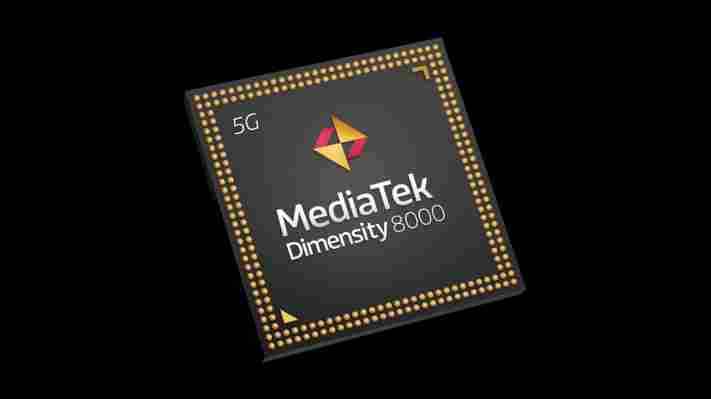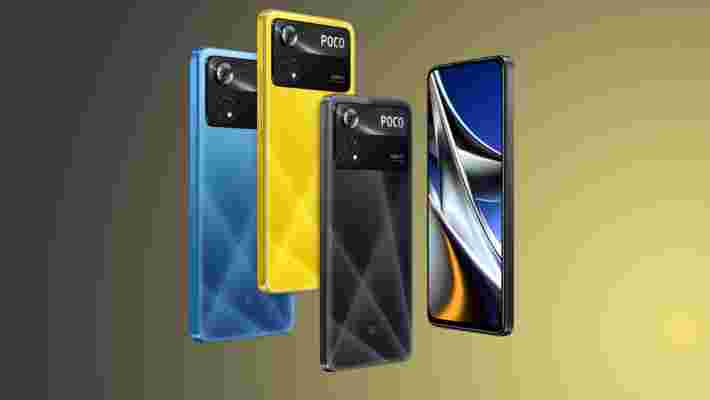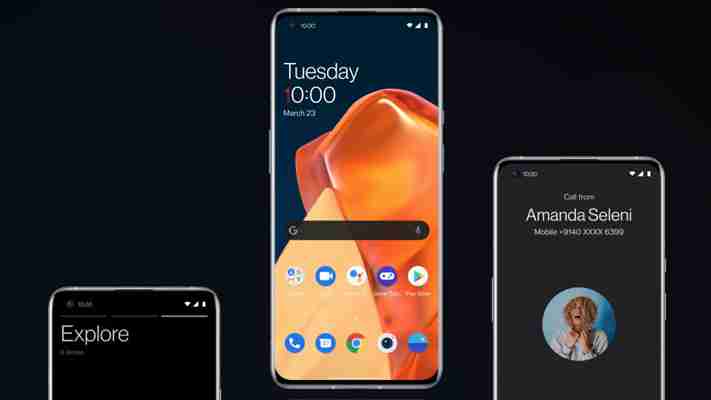MediaTek has announced two new premium chipsets designed for flagship 5G mobile devices: the Dimensity 8000 and Dimensity 8100.
Launched at MWC 2022 , the new SoCs add an additional tier to the company’s existing portfolio, filling a performance gap between the recently launched Dimensity 9000 and the less performant Dimensity 1300.
The Dimensity 8000 series chips bundle four Arm Cortex-A78 cores, an Arm Mali-G610 MC6 GPU and MediaTek’s latest AI processing unit, a combination the company says delivers “the most power-efficient performance in its class”.
Smartphones powered by latest MediaTek chips are expected to launch later this quarter, at the $500-$700 price-point.

MediaTek tackles the flagship market
Historically, MediaTek has played in the somewhat less sexy portions of the market, featuring inside budget and mid-range phones aimed at users for whom performance isn’t necessarily the priority.
The launch of the Dimensity 9000 in December last year signalled a shift in strategy, which will see MediaTek attempt for the first time to muscle its way into flashship mobile devices, a field traditionally dominated by Qualcomm.
At MWC, TechRadar Pro spoke to Pascal Lemasson and Rob Moffat, executives in charge of sales at MediaTek, who provided additional context around the company’s new approach and the significance of its new Dimensity chips.
“The strategy is to offer our customers chipsets from bottom to top. Before the Dimensity 9000, we had a gap at the top end,” said Moffat. “In the last three years, our R&D investment has been massive and 5G is a huge opportunity for us, so we’ve taken a decision to target the high-end market.”
“Ultimately, we need to be focused on technology leadership, which takes you automatically into top-tier products.”
Although all Android smartphone vendors use MediaTek chips in at least some of their devices and the company now holds the greatest market share (at roughly 40%), Qualcomm is still largely seen as the darling of the mobile processor space. Asked whether the company is seeking deliberately to break this narrative with its new Dimensity chips, the pair explained that there is still more to be done when it comes to changing the mindset of both customers and end-users.
“Qualcomm has dominated with Snapdragon for a long time, when it comes to share of the [flagship] market and the perception among technologists. But for us, it’s about looking after what we’re doing and making sure we have the best solution in place in order to compete,” TechRadar Pro was told.
“We need some time to change people’s conclusions about who the chipset leader is, in terms of bleeding-edge technology, performance and value to the end-user. But benchmarking shows that MediaTek is now in the lead,” added Lemasson.
Unlike Qualcomm, MediaTek’s mobile chipsets do not support 5G mmWave, which offers higher speeds over short distances than sub-6Ghz 5G. Lemasson and Moffat say the technology is already in place, and will feature in MediaTek SoCs launched later this year.
In other departments, however, the company is convinced its flagship SoCs are ready to compete with Qualcomm, toe-to-toe.
MWC (Mobile World Congress) is the world's largest showcase for the mobile industry, stuffed full of the newest phones, tablets, wearables and more. TechRadar is reporting on the show all week. Follow our MWC 2022 live blog for the very latest news as it happens and visit our dedicated MWC 2022 hub for a round-up of the biggest announcements.
Disclaimer: Our flights and accommodation for MWC 2022 were funded by Huawei, but the organization had no editorial control over the content of this article.
MWC 2022 feels emptier without LG Mobile, but it paved the way for more cheap phones
I have two particularly distinct memories from Mobile World Congress (MWC) 2019, the last 'true' MWC to take place before the pandemic.
One was the Xiaomi Mi 9 launch, which kicked off the show for me, and the other was LG's flashy event where it debuted the G8 and V50 ThinQ .
Now MWC 2022 is here, and boots are on the ground in Barcelona again for the event - but the Xiaomi 12 is missing in action, and LG Mobile is nowhere to be seen either, for reasons that tech fans already know about.
MWC has changed since its last real event, and LG's absence is indicative of larger trends in the smartphone market - and in the annual event.
Bye-bye LG Mobile
LG isn't exhibiting any smartphones at MWC 2022 because, in April 2021, it announced that it was to stop producing smartphones - so it has nothing to show off.
This wasn't a huge surprise, as it followed months of rumors to that effect, and was also foreshadowed by LG's dwindling market share (which can be seen in these Statista stats ), hastened by a few rapidly-growing Chinese up-and-comers which were eating up market share.

LG phones used to be popular - their flagships introduced new features to smartphones like ultra-wide cameras, dual-screen devices, vein tracking and more (some of which caught on and some of which absolutely didn't). Their budget phones were also popular - even I had one for a time.
But clearly, it couldn't keep up with the changing market, and in the years from MWC 2019 we saw it release its smartphones sporadically, focusing on odd concepts (like the LG Wing ) over its core flagship series.
Quirky mobiles are great for the tech fans, but they don't bring home the bacon, and this novelty reflected the core issue with LG's devices: they didn't offer the same value for money as the wave of Chinese mobiles that was crashing upon global tides.
Would LG have fit in at MWC 2022?
If LG Mobile hadn't stopped in its tracks, and was still making phones, it still wouldn't have fit in with MWC this year. The LG V70 ThinQ, or whatever its next flagship phone would be called, would stick out like a sore thumb from the other mobiles we're seeing at MWC 2022.
That's because this MWC is different - it's no longer the flagship-packed convention of yesteryear, and we've seen a very different type of mobile take center-stage on the showroom floor.

MWC 2022 has been defined by budget mobiles. We've seen five of them from TCL, four of them from ZTE, three from HMD Global, two from Xiaomi Pocophone; even Realme's two new mobiles, which are ostensibly its premium models, are still priced as mid-rangers.
That's not to say MWC in previous years only had top-end devices, but there wasn't such an overwhelming majority of budget mobiles in previous years.
In fact, only the Honor Magic 4 series and the OnePlus 10 Pro (which launched in China nearly two months ago), carry the premium-phone baton that would have previously defined MWC. And they represent just a fraction of the devices launched at the show.
A new era
LG Mobile was ended by the same thing that's now flooded the halls of MWC 2022: the burgeoning budget phone market. We mentioned earlier that lots of Chinese brands had rapidly grown in market share over the past few years - most of them are exhibiting at the convention.

While 'cheap phones' used to be rubbish little things, now they're feature-packed powerhouses, and manufacturers are tripping over themselves to offer low-cost phones that are as capable as fully-priced flaships.
The budget phone market has been increasingly impressive for a while now, but it was in the Covid-19 pandemic when things really kicked off, with Redmi, Realme, Pocophone, Motorola and more all furiously pumping out fantastic affordable mobiles.
MWC 2022 is the logical conclusion of that, where the stage floor is a battleground between loads of low-cost Androids.
LG Mobile would never have fit in there. Its devices were novel but not exactly competitive - they were like delicate little flowers, which are nice to look at, but don't exactly stand up to pressure.
So maybe it's okay that LG Mobile isn't at MWC 2022, even though it makes for a noticeably different show. The mobile world has changed since 2019, and nothing lasts forever (we don't mean tech company Nothing) - and perhaps if LG was still around, MWC wouldn't be as wonderfully budget-mobile-heavy as it is.
3 big things we learnt about the OnePlus 10 Pro this week
It’s MWC 2022 week, and there have been numerous announcements, including the announcement of the flagship Honor Magic 4 range , the Huawei MatePad Paper , and the global launch of the OnePlus 10 Pro .
It’s that last announcement that we’re focused on here, and if you’ve been keeping up with tech news then you might be thinking you already knew everything about the OnePlus 10 Pro. After all, it was announced for China back in January, but there are a few additional details that we’ve now learned.
These include the all-important release date, along with two other quite large nuggets of news, full details of which you’ll find below.
1. It will land in March

When the OnePlus 10 Pro was announced for China, it didn’t come with a release date for the rest of the world, but now we have one – or at least a release month.
OnePlus has confirmed that the OnePlus 10 Pro will hit stores in North America, Europe, and India in March, but the company hasn’t yet provided an exact date. Still, there’s not long to wait now, and we’d expect the actual date will be revealed soon.
Note that those in Australia won’t be getting the OnePlus 10 Pro, as the brand doesn’t currently sell its phones there.
2. It won’t be joined by a OnePlus 10
We always assumed that eventually we’d see a standard OnePlus 10 to go alongside the OnePlus 10 Pro. It makes sense after all – OnePlus typically launches two models, and the Pro name implies that there should be a non-Pro version too (otherwise it could just be called the OnePlus 10).
But despite all that, the company has revealed that there won’t be a OnePlus 10 . This is the first time the company has only launched one flagship model (not including the T entries) since 2018.
Still, confusing name aside it sort of makes sense, as OnePlus has gone from only making a few phones to making loads, so while there won’t be a OnePlus 10, there are lots of other OnePlus options.
3. It won’t switch to Oppo’s ColorOS

This one isn’t so much new information as a change in direction, as OnePlus has backtracked on its plans to use Oppo’s ColorOS operating system on its smartphones.
Oppo now owns OnePlus, so using ColorOS would make sense in some ways, but fans are, well, fans of OnePlus' OxygenOS, so they weren’t happy with this plan. As a result, OnePlus has confirmed that it will instead be sticking with OxygenOS, so the OnePlus 10 Pro will arrive running OxygenOS 12.1.
That said, going forward the two operating systems will share a code base, so OxygenOS may start feeling more like ColorOS even if it doesn’t take the name.
